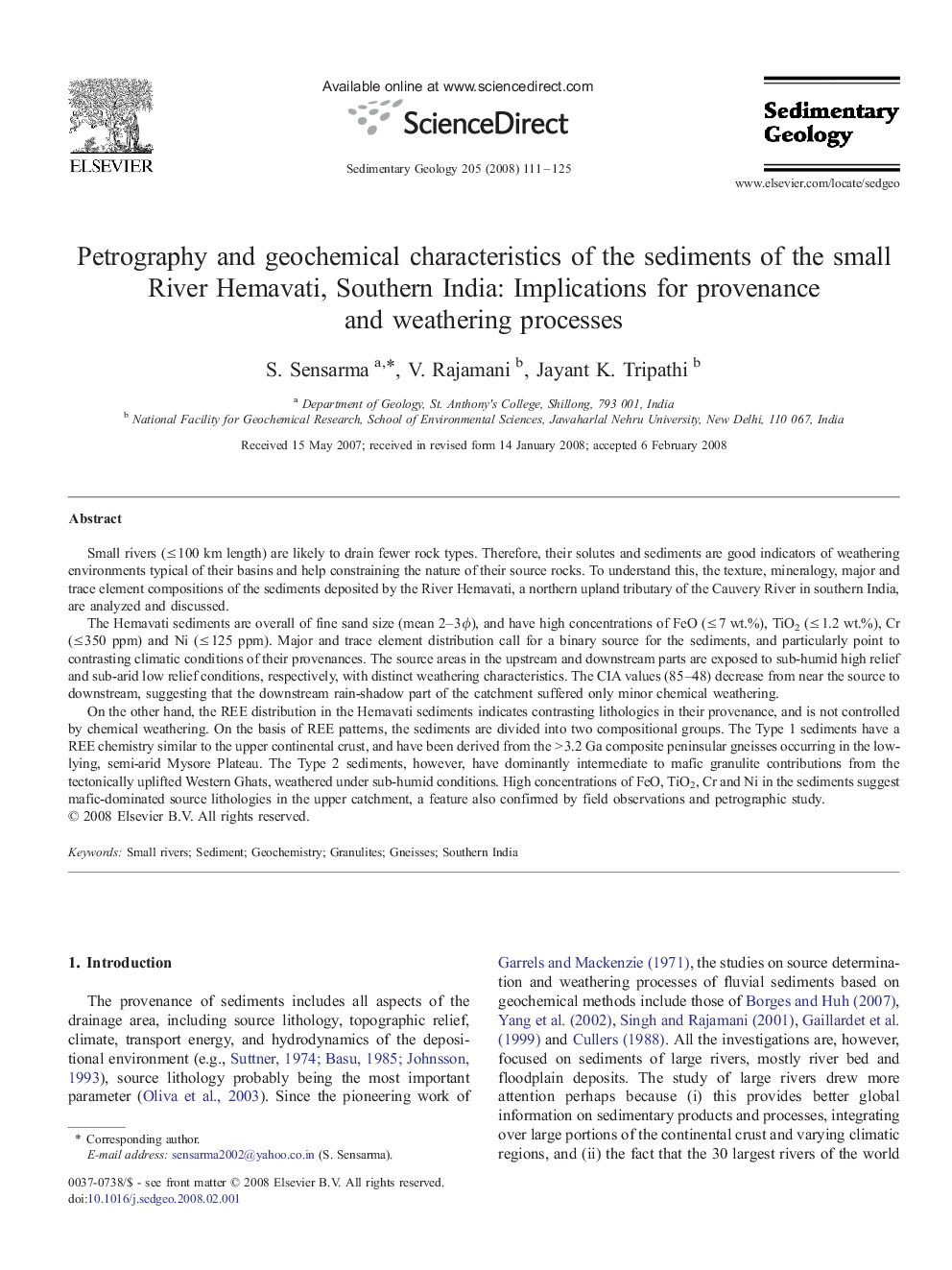| کد مقاله | کد نشریه | سال انتشار | مقاله انگلیسی | نسخه تمام متن |
|---|---|---|---|---|
| 4690610 | 1636156 | 2008 | 15 صفحه PDF | دانلود رایگان |

Small rivers (≤ 100 km length) are likely to drain fewer rock types. Therefore, their solutes and sediments are good indicators of weathering environments typical of their basins and help constraining the nature of their source rocks. To understand this, the texture, mineralogy, major and trace element compositions of the sediments deposited by the River Hemavati, a northern upland tributary of the Cauvery River in southern India, are analyzed and discussed.The Hemavati sediments are overall of fine sand size (mean 2–3ϕ), and have high concentrations of FeO (≤ 7 wt.%), TiO2 (≤ 1.2 wt.%), Cr (≤ 350 ppm) and Ni (≤ 125 ppm). Major and trace element distribution call for a binary source for the sediments, and particularly point to contrasting climatic conditions of their provenances. The source areas in the upstream and downstream parts are exposed to sub-humid high relief and sub-arid low relief conditions, respectively, with distinct weathering characteristics. The CIA values (85–48) decrease from near the source to downstream, suggesting that the downstream rain-shadow part of the catchment suffered only minor chemical weathering.On the other hand, the REE distribution in the Hemavati sediments indicates contrasting lithologies in their provenance, and is not controlled by chemical weathering. On the basis of REE patterns, the sediments are divided into two compositional groups. The Type 1 sediments have a REE chemistry similar to the upper continental crust, and have been derived from the > 3.2 Ga composite peninsular gneisses occurring in the low-lying, semi-arid Mysore Plateau. The Type 2 sediments, however, have dominantly intermediate to mafic granulite contributions from the tectonically uplifted Western Ghats, weathered under sub-humid conditions. High concentrations of FeO, TiO2, Cr and Ni in the sediments suggest mafic-dominated source lithologies in the upper catchment, a feature also confirmed by field observations and petrographic study.
Journal: Sedimentary Geology - Volume 205, Issues 3–4, 1 April 2008, Pages 111–125